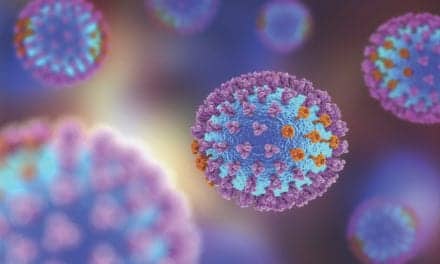A study led by researchers at the Medical University of Vienna has found that the conformance of genetic characteristics is essential for the long-term functioning of a donated organ after kidney transplantation.1 The study involved 500 patients who had undergone kidney transplantation and was conducted by a global consortium led by Rainer Oberbauer, MD, and his colleagues Roman Reindl-Schwaighofer, MD, and Andreas Heinzel, MSc, from the university’s division of nephrology and dialysis.
“It was already clear that the conformance in one area of the major histocompatibility complex on chromosome 6 explains a significant part of transplant survival,” explains Oberbauer. “But even if the donor organ and recipient in this region matched perfectly, about 20% of the transplants were still lost in the first 5 years.”
The team speculated that such failures were likely to be caused by a lack of conformance in a large number of other genetic regions. “We were able to confirm this experimentally by the determination of donor-specific antibodies against these nonconforming regions,” the authors add.
The main histocompatibility complex is a gene family that produces immune proteins (the histocompatibility antigens or HLA system). Such proteins are responsible for immunological individuality and play a major role in the tissue compatibility of organ transplants.
The aim of clinicians is always to achieve a high degree of correspondence between the HLA characteristics of donors and recipients. The more similar the characteristics, the lower the risk of a rejection. Nevertheless, after 5 years around 20% of transplants fail, and after 15 years the figure is 50%.
The Vienna study showed that after kidney transplantation the recipient’s immune system produces antibodies against ‘foreign’ proteins, which damage and ‘nibble’ at the lifespan of the donated organ. With the findings of the current study, which stresses the enormous importance of matching genetic characteristics, failure rates could be significantly improved in the future.
Results of the Vienna study suggest that a genomewide analysis of donor and recipient should be carried out prior to transplantation of living donor kidneys, in order to check the tissue match and to determine whether an exchange with a different living donor would be advantageous in overcoming conditions that are less than optimal. “At the MedUni Vienna, this has been done routinely and with very good success for several years now in the case of poor tissue conformance in the main histocompatibility complex,” says Oberbauer.
For further information, visit Medical University of Vienna.
Reference
- Reindl-Schwaighofer R, Heinzel A, Kainz A, et al. Contribution of non-HLA incompatibility between donor and recipient to kidney allograft survival: genomewide analysis in a prospective cohort. Lancet. Published online first, February 14, 2019; doi: 10.1016/s0140-6736(18)32473-5.





